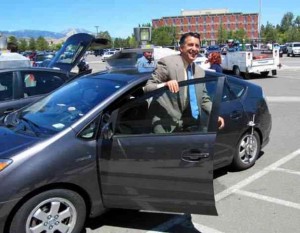The Jetsons would feel right at home in Nevada – which this month became the first state in the nation to formally approve legislation authorizing the use of autonomous vehicles on its roadways.
The once far-fetched idea is becoming more and more grounded every day as manufacturers work to develop technology that could permit a motorist to plug in a destination and let the vehicle drive there automatically. Indeed, Google has become a leader in autonomous technology, with several prototypes already logging over 160,000 miles in test runs.
While most experts contend the technology is still years away from widespread application, Nevada lawmakers apparently couldn’t wait. Last summer, lawmakers there ordered state regulators to establish rules covering the use of autonomous vehicles.
The regulations have now been finalized – and the Nevada Department of Motor Vehicles will now have to formalize licensing procedures for companies that want to test their vehicles in the state.
“Nevada is the first state to embrace what is surely the future of automobiles,” said Nevada Department of Motor Vehicles Director Bruce Breslow in a press release. “These regulations establish requirements companies must meet to test their vehicles on Nevada’s public roadways as well as requirements for residents to legally operate them in the future.”
The decision to act was apparently driven, at least in part, by Google, which has wanted to ensure that its autonomous vehicle test program wasn’t operating in a legal limbo. Google formally launched its research and development program in 2010 and has so far recorded not a single collision.
While such vehicles will effectively handle the serious driving chores they will also require someone to be in the position of “operator,” ready to take over just in case of a technical glitch. That’s likely one reason why Nevada maintained one key restriction in the new rules.
“There is no exemption for drinking and driving,” cautioned Breslow, meaning the bartender or bouncer won’t be able to toss you in the back seat, hit the Start button and send you speeding home.
On the other hand, regulators did give the operator permission to text and use a handheld cellphone.
The operator, at least for now, will need to have a special license. And the vehicles will be required to use an airline-style “black box” to track its operation, with data to be turned over to the state.
Manufacturers will be required to post bonds of between $1 million and $3 million, meanwhile, and they will have to advise the state as to when and where they’ll be testing their vehicles.
Google is just one of the players i9n the rapidly expanding field. General Motors has run several tests, including one that required the installation of special sensors in a stretch of Interstate highway north of San Diego. It has also been working with Pittsburgh’s Carnegie-Mellon University on a self-driving Chevrolet Tahoe SUV, dubbed The Boss.
BMW, meanwhile, has a number of test vehicles in operation, including one that it recently demonstrated maneuvering the treacherous Mazda Raceway Laguna Seca Race Track, never Monterey, California.
And Nevada Gov. Brian Sandoval was given a personal demonstration of what the new law might cover when he was chauffeured in an autonomous Toyota Prius that used radar and other sensors to help guide it to its destination.

